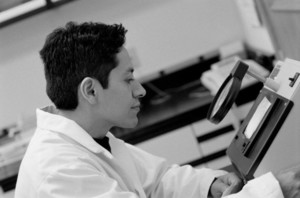Clinical trials required by European regulators to compare biosimilar products with corresponding biologic brands are surplus to requirements and may even be a barrier for the development of biosimilars of more complicated biologics, state Professor Huub Schellekens and Dr Ellen Moors of Utrecht University, The Netherlands, in a Nature Biotechnology Commentary of January 2010. “If you look in detail at the accepted and rejected biosimilars and the differences, then you might conclude that proof of clinical equivalence is actually overdue,” comments Professor Arnold Vulto of the Erasmus MC, Rotterdam.
For complex biosimilars in EU: drop clinical comparability
Biosimilars/Research
|
Posted 15/03/2010
 0
Post your comment
0
Post your comment

Professor Schellekens and Dr Moors state that the merits and/or added value of the comparability exercise are questionable. The comparison of quality characteristics between the biosimilar and the reference product will always show differences. And with the improvement of the analytical tools, our ability to find differences will only increase. In most cases, the consequences of these differences are unknown, but the quality differences become irrelevant if the clinical data show the biosimilar to be clinically equivalent to the reference product. They found that the quality of a biosimilar sometimes even exceeded that of the original product. According to them, an additional aspect for regulators to consider is technology obsolescence. “Since the introduction of the first recombinant DNA-derived therapeutic proteins, the technology to produce and purify these products has greatly improved. Biosimilar manufacturers are consequently using state-of-the-art technology; in contrast, brand manufacturers of the original products are often locked into old technologies because changing methods has major financial and regulatory consequences. With this in mind, it seems much more logical for regulators to expect biosimilars to be produced by the best technology on offer rather than to mandate that they are of comparable quality to the brands,” they state.
The authors argue there are also many reasons to question the usefulness of comparative pharmacokinetic trials. “The assays to determine product levels are often too imprecise; the relation between pharmacokinetic parameters and clinical effect of biologics is unclear; the dose-response curve of therapeutic proteins is often bell-shaped (meaning that widely differing protein levels have the same clinical effect); and the acceptance range for pharmacokinetics parameters between biosimilar and reference product are difficult or impossible to predefine and justify,” they write. The regulatory demand for clinical comparison between biosimilar and reference product is questionable considering the practical consequences according to them, though comparisons between biosimilar and original product are important during their development to set specifications for their production and purification and to validate their production methods and analytical tools. “Dropping the obligation to do the comparability exercise will make it easier to develop more complex biosimilars, such as monoclonal antibodies (mAbs) and vaccines, and will avoid the ethical and practical problems concerning the comparability studies of products with survival as the primary clinical end point,” they argue. The authors urge EU regulators to consider the experience with the first biosimilars to streamline current regulations and apply an even playing field, so that the same regulatory principles are applied to complex pharmaceuticals other than recombinant proteins, such as glatiramer acetate (Teva’s Copaxone) and iron-sucrose complex (Vifor’s Venofer).
Reference:
Huub Schellekens and Ellen Moors. Clinical comparability and European biosimilar regulations. Nature Biotechnology 28:1 28-31 (2010). 2010 January
Source: Nature Biotechnology
General
Samsung Bioepis wins Pyzchiva case; Regeneron patent rulings threaten foreign biosimilars
Chinese biosimilars go global: growth, partnerships, and challenges
What is the future for the US biosimilar interchangeability designation

Biosimilars/Research Posted 05/06/2025
Biosimilar clinical efficacy studies: are they still necessary?

Biosimilars/Research Posted 27/05/2025
The best selling biotechnology drugs of 2008: the next biosimilars targets








Post your comment